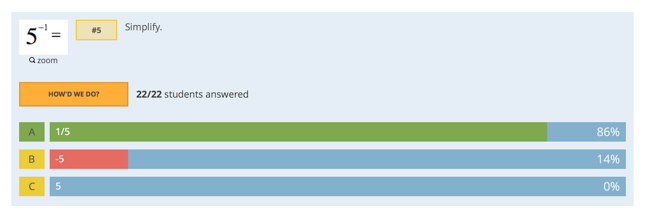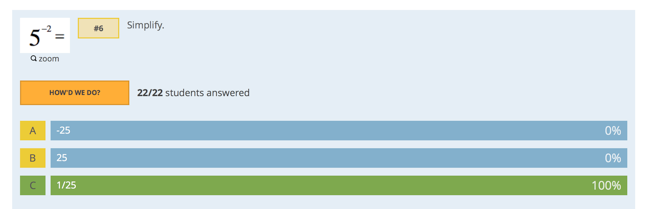By
Cathy Yenca, posted January 18, 2016 –
Have you read NCTM’s
position statement on formative assessment?
This brief read was both energizing and affirming for me. Currently serving in
year 4 of a one-to-one iPad® initiative, I’m still learning and growing in
applying formative assessment “best practices” in my own classroom. However,
the role that technology has played in promoting student discourse and providing
timely feedback is significant.
I’ve shared assessment anecdotes
and aha! moments with colleagues as well as through blogging. In my experience,
all teachers experience their own formative assessment epiphany with their own
students in due time. And once a teacher “sees the light,” it can’t be unseen
and often becomes a regular part of instruction. I hope the next few blog posts
inspire you to try something new with your own students so that you may have
your own formative assessment aha! moment.
Consider the following statement
from NCTM’S
Formative Assessment Position:
…by applying
formative strategies such as asking strategic questions, providing students
with immediate feedback, and engaging students in self-reflection, teachers
receive evidence of students’ reasoning and misconceptions to use in adjusting
instruction.
When I read the 20th
post of the Blogarithm, I immediately thought about my own students’
experiences exploring how zero as an exponent and negative exponents “behave.” Since
all of my students have iPads, I walk them through patterns to help them
generalize while giving every student a “voice” along the way. I like to ask
students questions using the “teacher-paced” mode on Socrative.com, a free Web-based tool (that also
has a free app). In this example, the questions in Socrative ask students to
simplify 53, then continue with 52, 51, 50,
5-1, and so on. I project the teacher-view screen at the front of
the classroom, and as each student enters his or her response to each prompt, anonymous entries remain hidden until I reveal
them, and discussion ensues.

The “teacher-paced” mode of
Socrative ensures that authentic error analysis, discussion, and necessary re-teaching
occur before moving on to the next prompt, thus emphasizing student accuracy
and not speed. It’s amazing what rich
mathematical discourse happens when every student’s thinking is made visible
for the entire class to consider! I firmly believe that this information is valuable
not only to the teacher but also to students, in that students greatly benefit
from seeing what their peers are thinking. Having the opportunity to compare
class thoughts to one’s own thoughts can help create a classroom culture in
which making mistakes is an acceptable part of learning mathematics. Errors
become teaching and learning opportunities when we can talk about them right
away. Student misunderstandings
become understandings right before
our eyes!

In my experience, tools like
Socrative are typically used to give quizzes to individual students, possibly
at the end of a lesson. Leveraging
such a tool instructionally, to plan and present “strategic questions, provide
immediate feedback, and engage students in self-reflection,” is a simple way to
empower all students in the class, not just the eager volunteers.
What other math topics would work
well as a “teacher-paced” Socrative lesson?
Want to view or use my lesson
example? Go to Socrative.com, sign up
for a free teacher account, and import this quiz: SOC-8904661
For
another Socrative classroom example, check out this
post.
 Cathy Yenca, [email protected], is a math teacher
in Texas. She tweets at @mathycathy
and blogs about teaching mathematics in a one-to-one iPad classroom at mathycathy.com/blog.
Cathy Yenca, [email protected], is a math teacher
in Texas. She tweets at @mathycathy
and blogs about teaching mathematics in a one-to-one iPad classroom at mathycathy.com/blog.